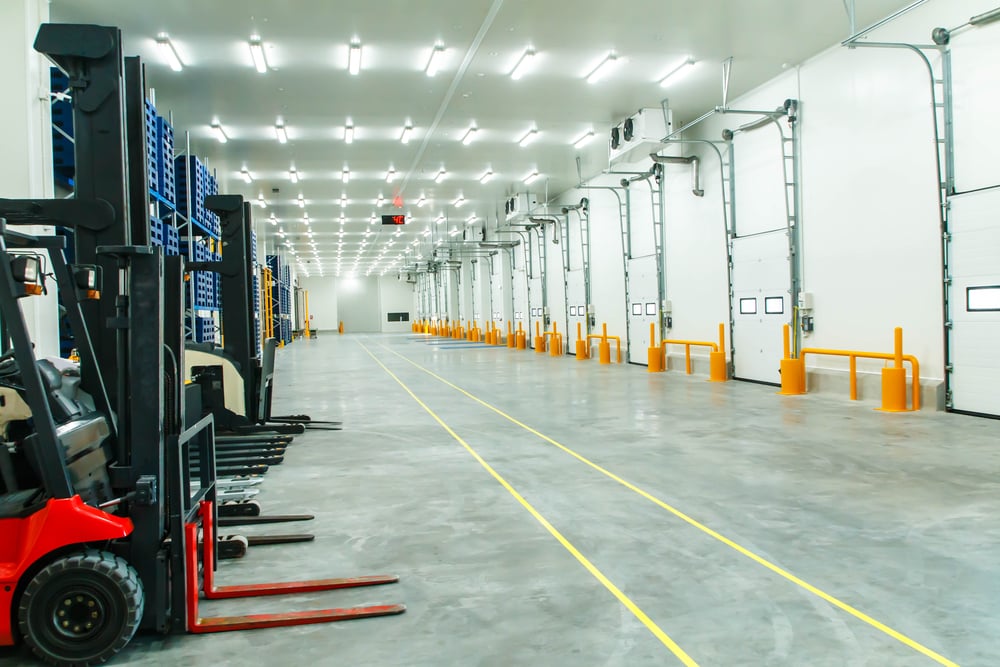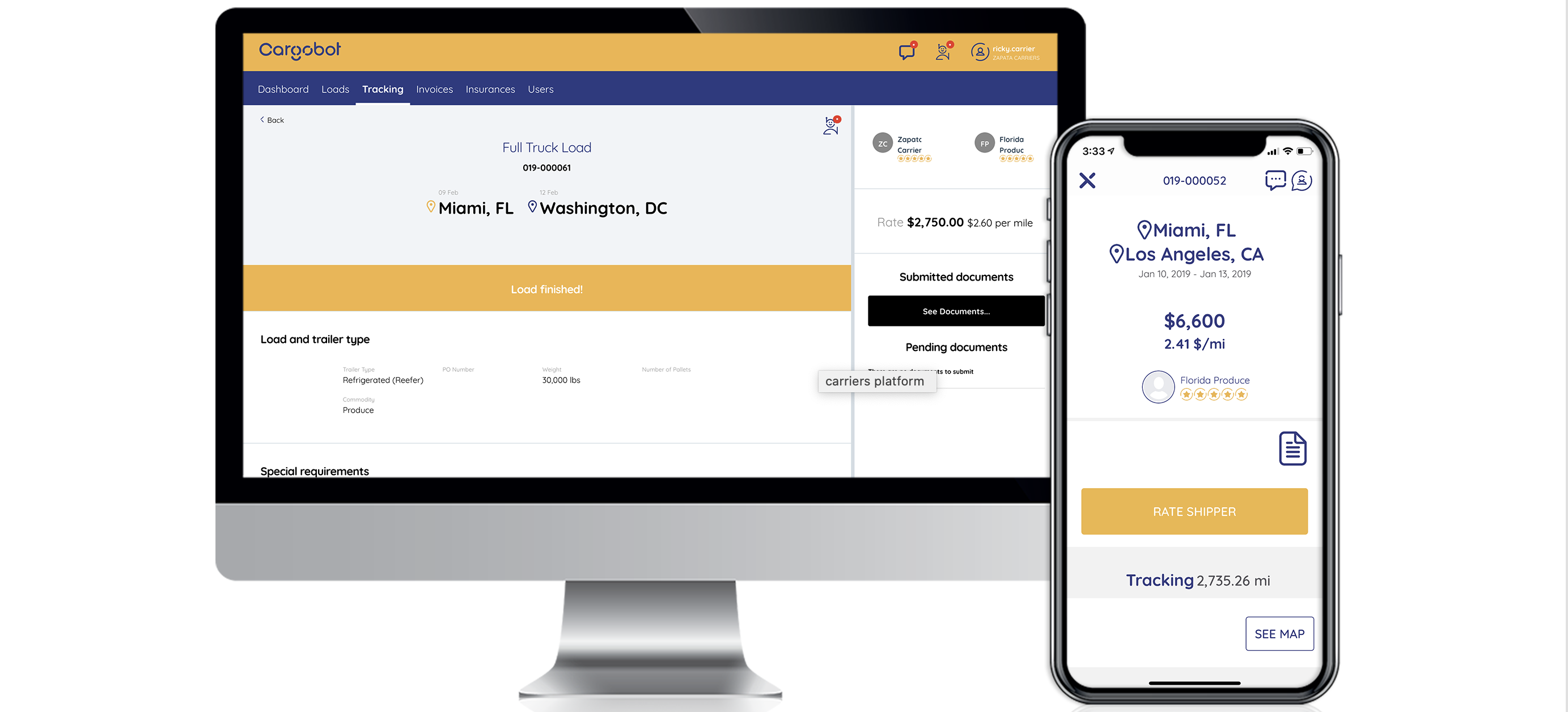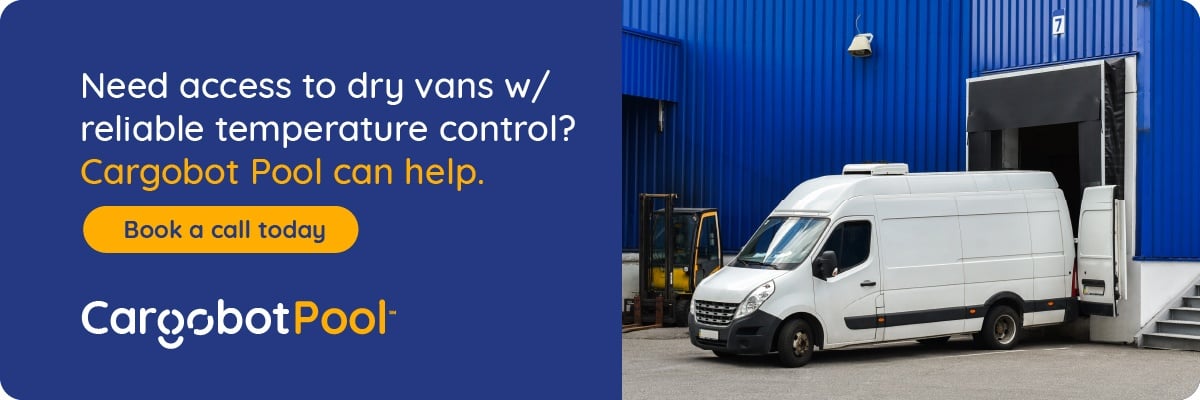Mastering LTL Refrigerated Shipping: A Step-by-Step Guide

Every year, $1.6 trillion worth of temperature-controlled goods are shipped by truck. Trucking represents about 86.3% of all temperature-controlled goods shipped by every type of transportation.
Transporting perishable freight that requires temperature-controlled environments has its challenges, though. With high risks, specific time-frames to deliver, and oftentimes high costs, managing reefer loads is a crucial yet demanding aspect of shipping.
Whether you’re shipping perishable goods like produce, pharmaceuticals, chemical products, or flowers, you need to know how to optimize your less-than-truckload (LTL) shipments, otherwise your shipments could be late, your goods could be spoiled, and you could end up overspending on fees and loss of goods.
In this guide, we’ll break down the steps you need to take to master LTL refrigerated shipping. By following these steps, you’ll be able to properly qualify a temperature-controlled LTL carrier so you can ensure your cargo gets to its destination safely and promptly.
What Is LTL Refrigerated Shipping?

LTL refrigerated (or reefer) shipping involves shipping refrigerated, frozen, or temperature-controlled freight that doesn’t necessitate the space of a full truckload.
With less-than-truckload refrigerated shipping, rather than waiting until you have a full load to ship (which means late delivery fees and risk of spoilage), you can leverage LTL to combine partial loads with other shippers into a single truck.
Refrigerated trailers maintain a specific temperature range to ensure the goods being shipped are kept safe from deteriorating or being damaged.
For instance, chilled beverages are shipped under a temperature range of 36 to 32 degrees Fahrenheit while frozen fish would move between 0 to -10 degrees Fahrenheit.
LTL reefer shipping maintains a controlled atmosphere to protect the cargo from temperature changes. Typically, trucks are kept within a range rather than an exact temperature to allow multiple product types to be shipped simultaneously.
Refrigerated LTL trucks have insulated walls, heavy-duty door seals, and reflective roofs to help maintain cooler temperatures.
Now, let’s go through the steps you must take to ensure your carrier can successfully transport your LTL refrigerated shipments.
Step 1: Ensure You Have the Right Temperature Match
The most important consideration to start with is the temperature range that a carrier provides. Simply put, if their reefer trucks don’t match your required temperatures, then it’s time to move on to the next option.
Keep in mind that just because a truck is labeled “refrigerated” doesn’t mean it will keep your products at the temperature they require. Refrigerated trucks can be set at widely ranging temperature zones
Step 2: Confirm There Is a Product-Type Alignment
Your chosen carrier should not just have the right temperatures. They also should have experience with your product type. For instance, if you sell a specific type of dog food, but your carrier has only shipped produce, you could run into some issues due to temperature or load loading and unloading.
You should feel comfortable with your carrier’s experience with your product type. It’s best to check references from other customers in your industry to see if you and the carrier are aligned on your product type.Cargobot handles both for you as part of its platform.
Step 3: Ensure Proper Product Segregation
Another crucial part of mastering LTL refrigerated shipping is keeping products segregated. One of shippers' biggest hurdles with reefer LTL is keeping products separated to avoid cross-contamination.
This is critical if you have meat, dairy, or common allergen-type products like nuts or gluten. However, efficient product segregation is also important when it comes to odors.
For instance, if your products are riding beside highly odorous food products like fish, onions, or coffee, there’s a good chance your products may absorb these scents. Your carrier should be mindful of these scents and know how to properly segregate these items to ensure there isn’t any impact from one product to another.
Step 4: Assess Pros & Cons of Multi-Temp Trucks
Nowadays, many refrigerated trucks have advanced technologically to be able to implement multiple temperatures in their trailers.
For example, a reefer LTL truck might store frozen food in a bulkhead at the front of the load while storing fresh deli products at the back of the trailer.
When a truckload is just heading from one point to another, this is typically safe and effective. But, refrigerated LTL shipping often has several stops along the way to different distribution centers. And, with every stop, the doors are opened and refrigerated air will escape.
After a handful of times, there is a risk that the temperature in each zone can rise, pushing your product out of the desired temperature range.
Multi-temperature reefer trailers are an important consideration and a good question to ask a potential LTL carrier before signing a deal.
Step 4: Ensure Timely Deliveries
Timely deliveries are more important for temperature-controlled products than any other product type. This is because a slight delay in a shipment could result in spoilage.
Any carrier you’re considering should have a solid history of being able to make requested arrival dates (RAD). This is especially important for LTL carriers since there is a higher chance of variance in delivery times due to multiple stops.
Step 5: Consider Pool Distribution to Improve LTL
One challenge of LTL refrigerated shipping is that these types of carriers can be hard to find. While there are plenty of regular LTL carriers, refrigerated LTL carriers aren’t as common. This means shipping costs will be higher than regular shipments.
Plus, LTL shipments can take much longer to move through the LTL terminal network, which means more time on the road and increased touches of your product.
With pool distribution, your cargo can share the ride with other products heading to the exact same destination (like retailer distribution centers) resulting in reduced shipping costs.
How Cargobot Pool Helps Cold Freight Shippers

Do you ship cold freight like fresh foods, frozen foods, personal care items, or pharmaceuticals?
If so, you need to ensure you’re leveraging a custom cold freight shipping solution to maximize your efficiency and keep costs down.
With Cargobot Pool, you can speed up delivery times with our progressive routing and scheduling software to improve your operations and save money.
Cargobot Pool helps prevent quick-decay product spoilage and cargo damage caused by inefficient partial truckloads. Our progressive load matching and merging system optimizes refrigerated, frozen, and dry goods within a single platform.
How the Cargobot Pool Works
With Cargobot Pool, you can find vetted refrigerated LTL carriers, manage in-transit loads, or consolidate freight. Our digital technology can help optimize your entire transportation process for LTL reefer freight.
The Cargobot Shipper app consolidates partial truckload freight into a single full truckload, giving you more control over delivery times, preventing spoilage, and reducing your shipping costs.
With Cargobot Pool, you get:
- A single solution for PTL/consolidated shipments
- Average transportation cost savings of 10-15%
- Improved freight consolidation and movement
- Better protection for sensitive shipments (Reduces damages by up to 3% with PTL)
- Access to a nationwide network of vetted carriers
- PTL shipments help reduce transit times by up to 25%


